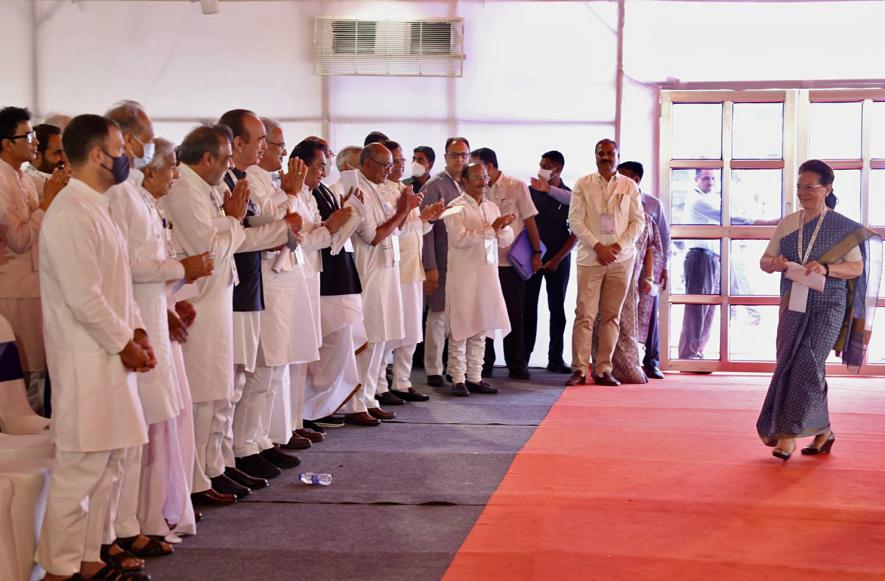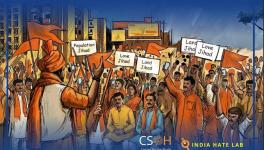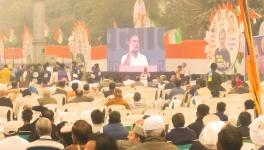Congress has a Structural Crisis, Not Just Loss of Connect

At the recent Chintan Shivir of the Congress party, its former president Rahul Gandhi made some useful observations regarding his party’s “loss of connect” with the people. What he said came across as honest self-reflection at an organisational level but may not be the only or most important reason for the crisis in the party. Gandhi’s observations reflect that Congress has not got its act together nor yet realised the depth of the crisis it is in.
However, it is not the mere inclusion of leaders below 50 years of age that will create demographic magic in favour of the Congress, but thinking of a new narrative. A narrative that will not only counter the BJP-RSS but tune in to the new reality of which we are a part.
Social democracy and social democratic parties across the globe are in a crisis. Much of what gets referred to as an ideological crisis is, in fact, a crisis of massive proliferation of social differentiation. Smaller social units are seeking greater and quicker social mobility. In the Indian context, this global change is multiplied manifold due to the prevalence of “graded inequalities”.
It is the populists who are articulating this new reality through multi-pronged narratives, issues and agendas, which might be at cross-purposes but still work on the ground. This is because they cater to each of these groups individually. The segmented and fragmented social realities and interests are then stitched onto an overarching abstract notion of community, religion and nation. In addition, BJP-RSS are also actively mobilising prejudices and catering to the anxieties of the “fear of fall” in neoliberalism. They are brazen in encouraging groups to maintain their privileges at the cost of the Other. In the end, it may not work to accommodate all, but it will work until we reach that endpoint.
The BJP has strategised at the level of sub-castes, sub-regional identities and sects within religious groups. It can even mobilise sub-linguistic groups. And it also mobilises the counter-narrative. Against sub-castes, it mobilises the narrative of rising above “caste and creed” and against all other such micro-identities, it raises the pitch for monolithic Hindu religion, Hindi as the national language, and so on.
Abstract and unifying identities work to legitimise social fragmentation; they obfuscate growing social tensions and also work as red herrings for the Opposition parties. In such a scenario, from the vantage point of smaller groups, parties like the Congress and their “unity in diversity” narrative look like they are engaging in empty rhetoric. When such parties mobilise sectional interests, the BJP-RSS combine project it as being against the nation, religion and community.
The Congress is caught in this cross-fire and gets shot at like a bystander. It is neither able to claim a monolithic Hindu identity as the BJP does. Nor is it able to reach out to smaller groups given its old model of accommodation around larger grids such as the Dalits, Muslims, and upper castes. It gets caught in how social prejudices play out between sub-castes and sub-regional identities. Neither does it fan them nor mitigate them. It ends up in a no man’s land, and therefore, there is a “loss of connect” with the people and a shrinking social base.
Even on the economic front of the discourse on development, the Congress party is caught in a similar dilemma. It cannot critique the policies of the BJP because it had intended to implement most of them, including GST, farm laws, four-year education courses, private universities, contractual employment and withdrawal of social security measures such as pensions. What can the Congress party possibly say? It can, at the most, complain about improper implementation, like with the GST.
The Congress party could additionally focus on the BJP government’s demonetisation decision in November 2016. However, there are no differences between it and the BJP in terms of the development model. Thanks to the National Advisory Council under former party president Sonia Gandhi, the Congress retained its welfare face. If left to the Manmohan-Montek-Chidambaram trio, the implementation and pace of this model would have been no different than the BJP’s. Chidambaram today waxes eloquent about welfare, poverty and human rights, but he was at the forefront of formulating the Unlawful Activities (Prevention) Act, 1969 as we see it today, and deploying other extraordinary laws, including the threat of using sedition arbitrarily. He was a vocal supporter of 80% of India moving to urban areas by 2050 and “nationalistic” enough to use “eminent domain” to use force against the tribals in central India. The BJP is only doing these things in a more centralised manner and has managed to reduce the Congress to an image of being a “weak BJP”.
The Congress party’s inability to say anything definite about the policy frame is hurting it badly. It is not yet prepared to think of anything new as it continues to be dominated by the likes of Chidambaram on the economy question and on the “law and order” front. Narratives that were dormant under the Congress have become more lively and animated under the BJP rule. It is also for this reason that whether it is Dalits or Muslims, they refuse to see or experience anything very different, and so there is no great hope in the Congress returning to power.
At the organisational level, the Congress party has the advantage of being civil but disorganised. It began to outsource tickets based on resources a long time ago. It has an organisational ethic of seeking benefits and positions first, work and contribution later. Much in contrast, the BJP has a centralised leadership that distributes patronage but not without work. Behind this is the contribution of the RSS, whose cadre is mostly driven by their own brand of idealism and larger-than-life imaginations. The RSS today claims five million pracharaks. Many BJP leaders have risen after decades of work without any promise of reward.
The BJP has an “outsider” image to ruling elites, and the Congress, despite being out of power, behaves like one. It is clearly reflected in the desperation of BJP leaders and how they seem to work tirelessly, while the Opposition appears in no hurry to return to power as, at a concrete and everyday level, it makes little difference to the social capital they carry. They imagine themselves as the de facto alternative.
The Congress needs to see its crisis as a structural one, not merely organisational. It is a good starting point to think of what is happening as an ideological battle, but which needs to be filled out and tuned to a new reality—and not in returning to Nehru and Gandhi, even if it retains the spirit and idealism they had come to represent.
The author is an associate professor at the Center for Political Studies, Jawaharlal Nehru University. His book, Politics, Ethics and Emotions in ‘New India’, will be published by Routledge, London, in 2022. The views are personal.
Get the latest reports & analysis with people's perspective on Protests, movements & deep analytical videos, discussions of the current affairs in your Telegram app. Subscribe to NewsClick's Telegram channel & get Real-Time updates on stories, as they get published on our website.
























